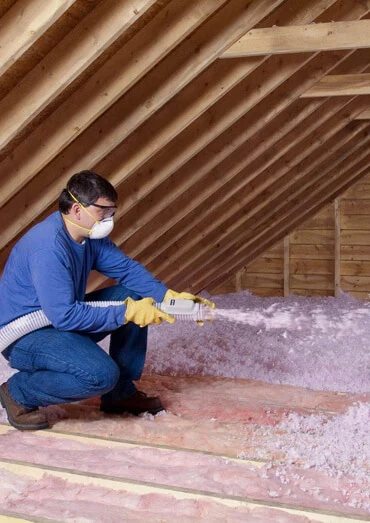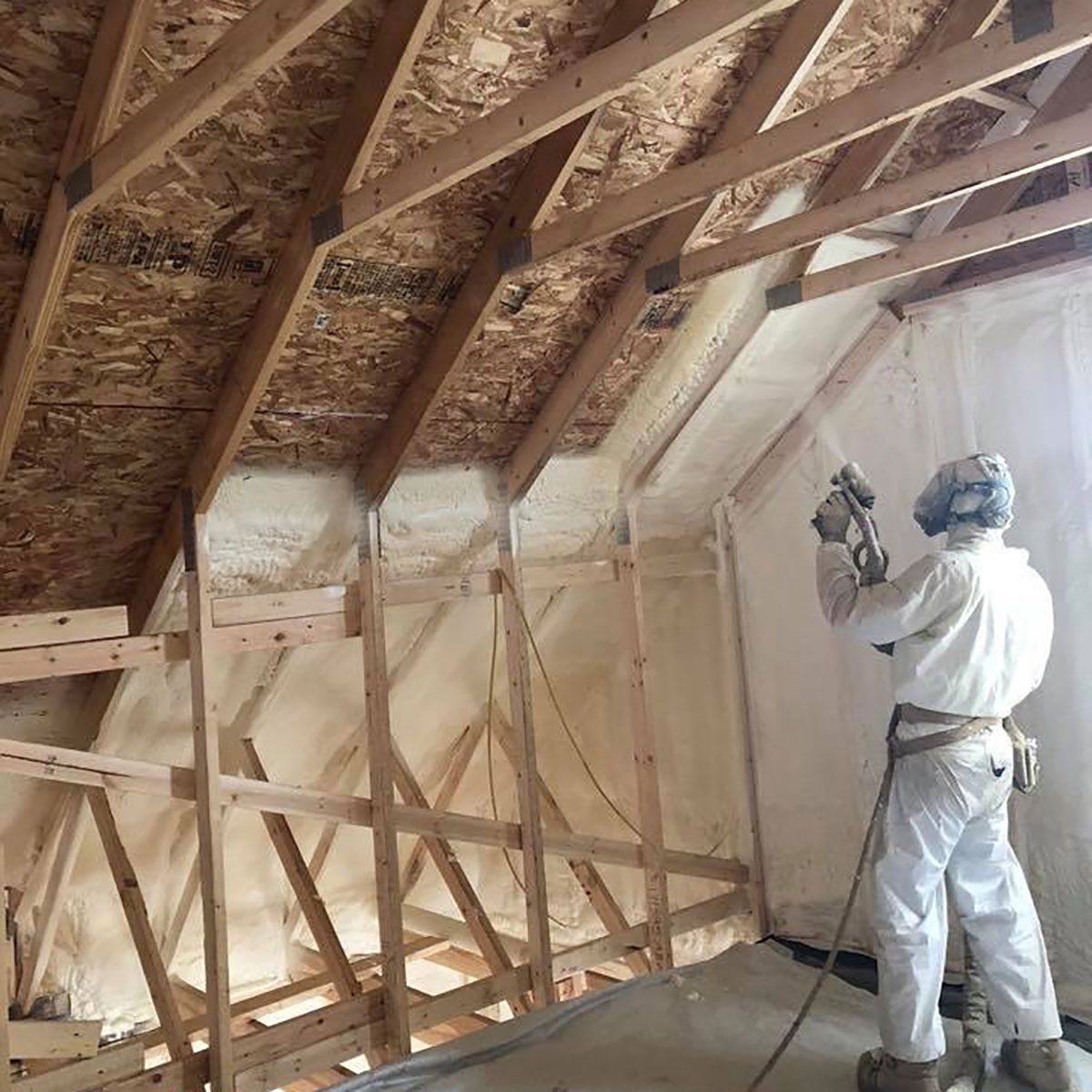Attic Insulation DFW: What You Need to Know Before Updating Your Insulation
Attic Insulation DFW: What You Need to Know Before Updating Your Insulation
Blog Article
Discover the Various Sorts Of Attic Insulation and Their One-of-a-kind Benefits for Your Home's Power Efficiency

Fiberglass Insulation
Fiberglass insulation is just one of the most commonly used products for attic room insulation due to its superb thermal performance and cost-effectiveness. Composed of little glass fibers, this product properly traps air, producing an insulating obstacle that helps maintain constant interior temperatures. Its high R-value per inch makes it especially effective at resisting warmth transfer, which is crucial for energy conservation in homes.
Installation of fiberglass insulation is reasonably straightforward, frequently available in batts or loose-fill forms, fitting different attic configurations. Furthermore, it is immune and non-combustible to wetness, minimizing the threat of mold growth. This durability adds to its long life, making fiberglass a practical long-term financial investment for property owners.
Moreover, fiberglass insulation is commonly made from recycled products, which boosts its eco-friendliness. The product can likewise add to soundproofing, decreasing noise transfer between rooms. While it is vital to put on safety gear throughout installment to prevent irritation from the fibers, the total benefits of fiberglass insulation, consisting of energy financial savings and environmental considerations, make it a preferred selection for improving attic room performance and advertising a comfortable living environment.
Spray Foam Insulation
Spray foam insulation is a very reliable choice for attic insulation, known for its premium air sealing and thermal performance. This innovative insulation material is composed of a blend of isocyanate and polyol resin, which, when integrated, broadens swiftly to fill up gaps and dental caries in the attic room. Its capability to follow numerous surface areas makes certain a constant obstacle against air leaks, substantially decreasing heat loss during colder months and heat gain throughout warmer periods.
Among the essential benefits of spray foam insulation is its high R-value per inch, which means it provides exceptional thermal resistance in a reasonably thin application. This is especially useful in attic rooms where room is commonly limited. Furthermore, spray foam can aid minimize moisture accumulation, lowering the risk of mold and mildew and mildew development, which can be destructive to both the structure and interior air top quality.
While the preliminary price of spray foam insulation might be higher than conventional options, its lasting energy savings, combined with boosted comfort and boosted home value, make it a beneficial financial investment for property owners looking for boosted power efficiency. Attic Insulation DFW. On the whole, spray foam insulation sticks out as an effective solution for optimizing attic room insulation
Cellulose Insulation

Cellulose insulation is a prominent choice for attic insulation, largely composed of recycled paper items treated with fire retardants. This eco-friendly option is recognized for its exceptional thermal performance, effectively reducing warmth transfer in both summer season and winter season. The dense composition of cellulose permits it to load spaces and spaces in attic room rooms, offering a smooth obstacle you could try here versus air leaks.
One of the substantial benefits of cellulose insulation is its capacity to resist mold and mildew and insects, owing to the fire resistant treatments made use of during production. Furthermore, it flaunts a high R-value per inch, which equates right into premium energy efficiency. Home owners can expect lower home heating and air conditioning expenses as a result of enhanced insulation.
Setup is usually achieved through blowing loosened cellulose into the desired location, permitting a fast and reliable process. This technique also minimizes interruption to the existing structure. Additionally, cellulose insulation has a fairly reduced ecological impact, as its production process uses recycled products, adding to lasting building practices.
Rock Wool Insulation
Amongst the different options for attic room insulation, rock woollen, also called mineral woollen, stands apart as a result of its remarkable thermal and acoustic efficiency. Made from all-natural or recycled materials, rock woollen is created by thawing rock and spinning it into fibers, leading to an item that offers outstanding insulation residential or commercial properties.
One of the substantial benefits of rock woollen insulation is its high R-value, which suggests its efficiency in withstanding warm circulation. This particular not just boosts power performance however additionally adds to keeping a comfy indoor temperature level year-round. In addition, rock woollen is naturally fireproof, making it a much safer option for homes as it can stand up to high temperatures without melting or releasing poisonous fumes.
Additionally, rock wool insulation masters soundproofing capabilities, effectively minimizing noise transmission between spaces and from outdoors resources. This makes it an excellent selection for property owners looking for a relaxed living environment. Moreover, rock woollen is moisture-resistant, aiding to avoid mold and mildew growth and keeping my sources the structural integrity of the attic room room. On the whole, rock wool insulation gives a thorough service for boosting energy performance, safety and security, and comfort in household settings.
Glowing Barrier Insulation
Glowing barrier insulation offers as an efficient solution for minimizing heat transfer in attics, particularly in warmer environments. This kind of insulation works by reflecting induction heat far from living rooms, thereby decreasing the amount of warm that goes into a home throughout warm weather - Attic Insulation DFW. Normally made up of a very reflective product, such as light weight aluminum foil, glowing barriers are installed in attics, facing the roofing, where they can obstruct inbound warmth from the sunlight
The key benefit of radiant barrier insulation is its capacity to lower cooling prices. By mirroring warm instead of absorbing it, glowing barriers can help maintain a more stable interior temperature level, lowering the work on cooling systems. This performance converts into lower energy bills and increased comfort for homeowners.
Along with power savings, radiant barriers can likewise add to enhanced indoor air quality. By reducing warmth build-up, they assist reduce moisture degrees, which can stop mold growth and enhance general air flow. When mounted correctly, radiant barrier insulation can Continued be an indispensable enhancement to any type of energy-efficient home, making it a worthwhile factor to consider for house owners aiming to improve their attic insulation approach.
Final Thought
In final thought, understanding the various types of attic insulation-- fiberglass, spray foam, cellulose, rock wool, and glowing obstacles-- enables home owners to make informed decisions pertaining to energy effectiveness. By picking the appropriate insulation product, substantial reductions in power costs can be accomplished, along with improvements in indoor comfort.

In conclusion, recognizing the various types of attic room insulation-- fiberglass, spray foam, cellulose, rock wool, and glowing barriers-- enables home owners to make educated decisions regarding power effectiveness.
Report this page